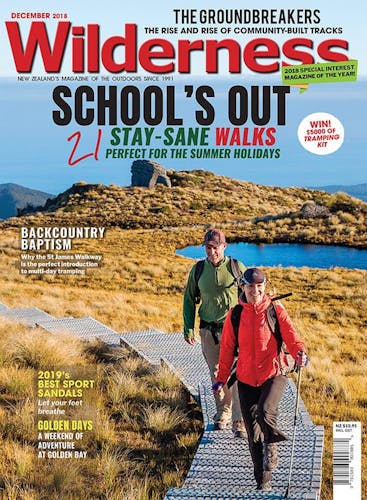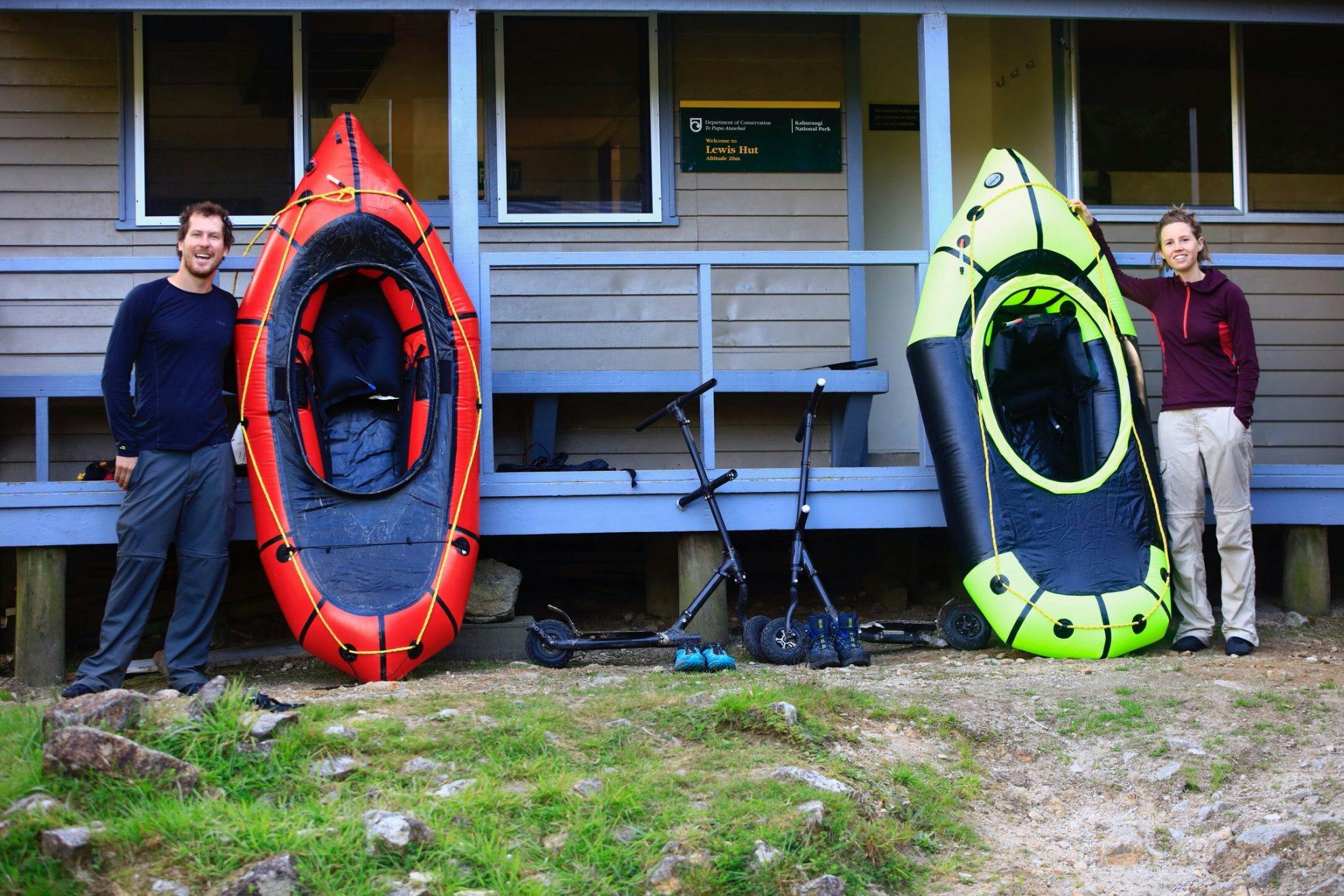Two Australians who completed a South Island traverse using a lightweight scooter and a packraft believe they’ve have found the ultimate thru-hiking innovation. Could ‘scootouring’ be the next big thing? George Driver meets scooter advocate Constance Titterton
Why do a South Island traverse using a scooter?
Constance Titterton: My friend Jeremy Platt came up with the idea while on another South Island trip. He was trying to hitchhike after a few weeks in the backcountry and no one would pick him up and he thought ‘wouldn’t it be great if I had some kind of transport in my pack that I could use’. He spent a couple of years developing different versions of a pack-scooter and thought the South Island would be a great place to test them out.
What are the scooters like?
CT: They are made of carbon fibre and aluminium and weigh about 3kg. He used a 3D printer to create a mould out of plastic and lined it with carbon fibre. He didn’t have any experience making anything like that. They’re versatile and can turn into different tools. The components are interchangeable and can be made into paddles when we were packrafting, tent poles for camping and walking poles for hiking.
What was the benefit of using a scooter?
CT: We could cover so much more ground without having to rely on transport or spend hours walking along roads. It suits tramping in New Zealand, particularly in the Canterbury high country where there are a lot of 4WD tracks before you reach the trailhead. It’s also great for resupplying, because you can scooter to the nearest town and don’t have to hitchhike or arrange transport. But most importantly, they are fun to ride. Scooting through beautiful places is a blast.
How did they cope with the rigours of the trail?
CT: We had no idea if they would hold up to a four month trip. We sometimes had 30kg packs, which included 8kg of packrafting equipment, so they were under a lot of strain. But they handled it really well. The tires are the width of a mountain bike tire, so they had no trouble on 4WD or mountain bike tracks. We also used DIY suspension, letting air out of the tires on bumpier sections and they were very comfortable. We could attach our packs to the front of the scooters, which takes the pressure off your back.
What route did you take?
CT: We did a 1700km trip starting near Farewell Spit. We scootered down the coast, walked the Kaituna Track and scootered to the Heaphy Track. We then scootered down the West Coast to Karamea and tramped and scootered to Nelson Lakes National Park. We then hiked Waiau Pass, packrafted down the Waiau River, and continued through to Lake Sumner, Harper Pass, Lake Coleridge and the Rakaia River. Snow on the Southern Alps sections forced us to divert to the West Coast via Arthur’s Pass. We scootered south and packrafted the Haast and Cascade rivers, and went down the coast to the Hollyford Track. We then scootered to Te Anau and on to Manapouri and packrafted the Waiau River to the coast.
Would you recommend it?
CT: I loved it. It was such an awesome way to see a lot of the South Island. If we didn’t have the scooters, we would have had to do much smaller trips. Jeremy is planning to do the North Island leg of the Te Araroa Trail with a scooter. There’s a lot of road walking, so it should work well. I’d like to go back and do a slightly different route in the South Island. There’s still so much we didn’t see.
Do you think ‘scootouring’ could take off?
CT: I think it has a future, 100 per cent. Everyone we met on the trail thought it was an awesome idea and wanted to try it. It gives you so much freedom. Jeremy is still refining the design, but he hopes to begin selling them in future.








